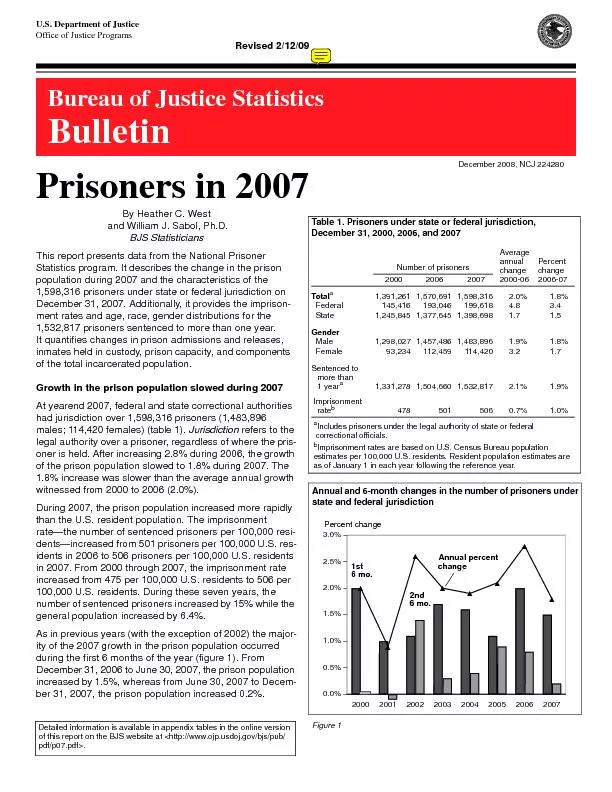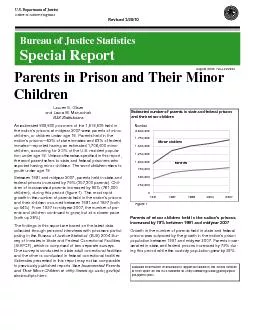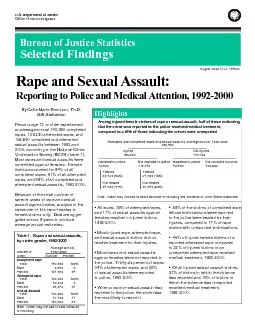PDF-Bureau of Justice StatisticsDecember 2008, NCJ 224280U.S. Department o
Author : faustina-dinatale | Published Date : 2016-06-14
Percent change 2000200120022003200420052006200700051015202530Annual percent 1st6 mo Table 1 Prisoners under state or federal jurisdiction December 31 2000 2006 and
Presentation Embed Code
Download Presentation
Download Presentation The PPT/PDF document "Bureau of Justice StatisticsDecember 200..." is the property of its rightful owner. Permission is granted to download and print the materials on this website for personal, non-commercial use only, and to display it on your personal computer provided you do not modify the materials and that you retain all copyright notices contained in the materials. By downloading content from our website, you accept the terms of this agreement.
Bureau of Justice StatisticsDecember 2008, NCJ 224280U.S. Department o: Transcript
Download Rules Of Document
"Bureau of Justice StatisticsDecember 2008, NCJ 224280U.S. Department o"The content belongs to its owner. You may download and print it for personal use, without modification, and keep all copyright notices. By downloading, you agree to these terms.
Related Documents














